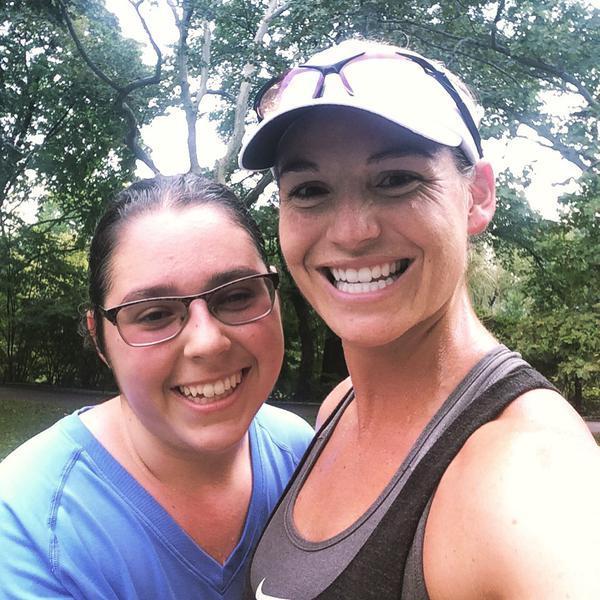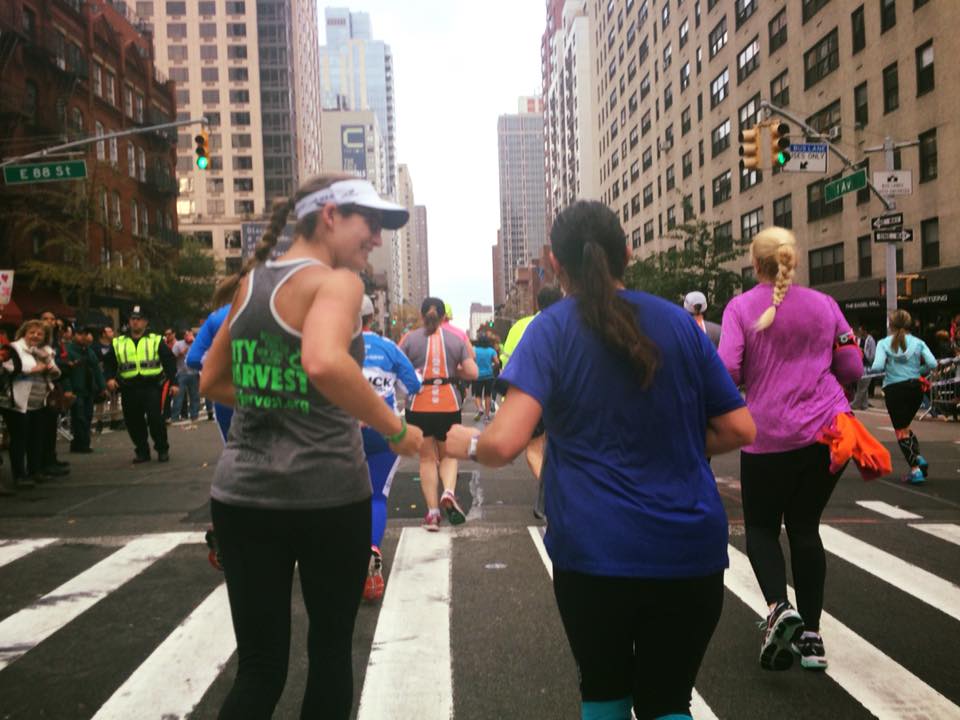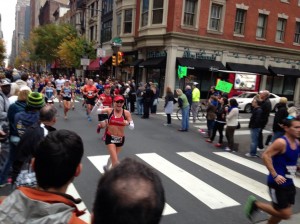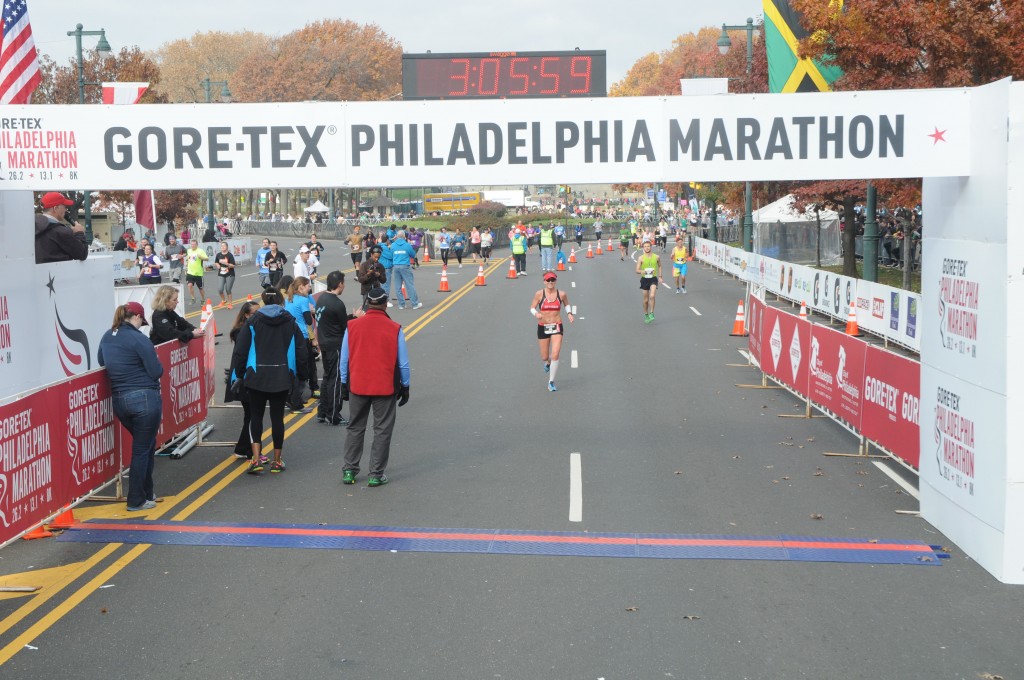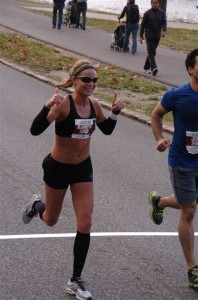 As most have heard, the weather on Patriot’s Day was anything but kind. Marathoners are pretty tough people, and Monday demanded our mental strength to carry when our bodies succumbed to the elements. I often preach to my runners that they need to learn to train in most elements because we never know what we’ll be handed by Mother Nature on race day. Monday was a reminder of that. Not surprisingly, the runners I know who preformed best were the Winter Warriors and the Ultra Marathoners.
As most have heard, the weather on Patriot’s Day was anything but kind. Marathoners are pretty tough people, and Monday demanded our mental strength to carry when our bodies succumbed to the elements. I often preach to my runners that they need to learn to train in most elements because we never know what we’ll be handed by Mother Nature on race day. Monday was a reminder of that. Not surprisingly, the runners I know who preformed best were the Winter Warriors and the Ultra Marathoners.
The biggest takeaways from my 4th Boston finish:
- Dress and pace for your body. I found protecting my hands with two layers for the first half of the race incredibly helpful. I know that I’m not great at regulating core temperature. I had originally planned to race in shorts, but the forecast continued to change and predict cooler temperatures on Sunday, and so I made a last-minute purchase of tights at the expo and am SO GLAD I did! Shorts may have been a big downfall. I bought the last pair of XS tights at the expo – so the lesson: don’t attend the expo at the very end if you need something for race day. I got super lucky.
- Athlete’s Village was a muddy mess. My feet were soaked in cold mud for literally 2 hours before the start. I had never imagined the school to be so flooded. I should have brought a throw-away pair of sneakers. And a thousand trash bags. I was ready for the cold, but the wet feet for hours was a bad surprise. The pre-race and post-race was the worst part of the race.
- It’s incredibly tough to tear open GU with frozen hands. It’s tough to stomach drinking cold water when your body is freezing, it’s impossible to untie/tie a shoe with frozen hands. Going to the bathroom with soaked and frozen tights and frozen hands was also quite challenging. Big shoutout to Kevin. A rock in my sock became an issue, and I paused at mile 19 or so to attempt to take off my shoe. I was pretty unsuccessful. When I saw Kevin and the QDR crew at mile 20, I ran over and asked for help. He helped me solved the rock in the sock problem and I’m so glad he did!
- The crowds were a little lighter than other years, but when the rain changed to a downpour, they’d cheer even louder. I am so appreciative of the folks who chose to weather the storm. It was a really nasty day to be outside, and the crowd support made the journey a bit less painful.
 My calves felt like they were on the verge of cramping due to the cold around mile 14. I did everything I could to prevent cramping from happening, which meant changing my stride, form and pace in the late miles. I knew I was better off adding a minute to each mile than cramping and needing walk and stretching breaks in the elements. At the finish, I could barely lift my legs. My hips were in incredible pain, so cold and tight, and I wasn’t confident I’d make it to my hotel without a wheelchair ride to medical. Marni and the cup of hot cocoa at the finish line were the only reason I didn’t end up in a wheelchair.
My calves felt like they were on the verge of cramping due to the cold around mile 14. I did everything I could to prevent cramping from happening, which meant changing my stride, form and pace in the late miles. I knew I was better off adding a minute to each mile than cramping and needing walk and stretching breaks in the elements. At the finish, I could barely lift my legs. My hips were in incredible pain, so cold and tight, and I wasn’t confident I’d make it to my hotel without a wheelchair ride to medical. Marni and the cup of hot cocoa at the finish line were the only reason I didn’t end up in a wheelchair.
The finish line never disappoints. I was emotional early in the race, a few times during, and then totally lost it as I got closed to Hereford Street. All of the hard work, the years of training, the humbling runs, the BQs, the PRs, the countless hours I’ve struggled on the track alone – the final 600M of Boston Marathon make it all worth it. Nothing compares.
I went into Boston for “fun,” and then to “make memories” once I saw the weather was going to be horrendous. Memories were made. Many of the memories weren’t great. Some downright sucked. Others were amazing. The marathon tests us all. There are highs and lows. Some have more lows. But that’s where the lessons are learned. Of the 3 hours, 26 minutes and 22 seconds I was on the course, I’d say 3 hours were pretty painful, uncomfortable or terrible. But I did it. I’m mentally and physically exhausted. I can tell my immune system is a bit compromised. But I’ll be stronger in the future because I didn’t give up. I excited to rest and recover. I know it’s necessary to hit the “pause” button after a race. I’m eager to dive into training for St. George Marathon, but also happy to chill out before I start that journey. There has to be balance. Work hard, recover hard. I haven’t decided if I’ll run Boston in 2019. I want to digest and process.
